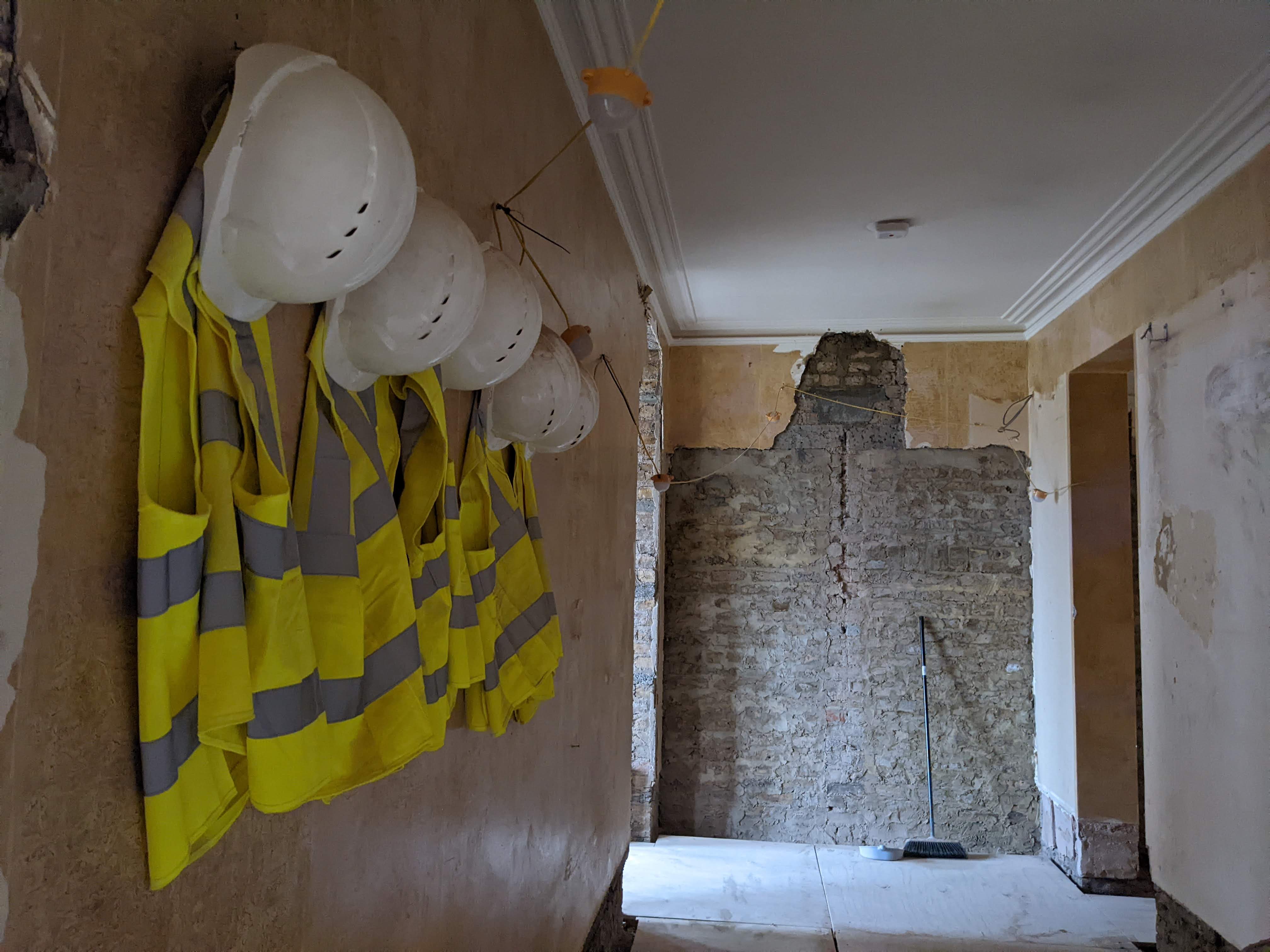The Building Safety Act 2022 and High Risk Buildings

The building safety act and high risk buildings
In July 2020, the Government introduced the Draft Building Safety Bill, aimed at advancing comprehensive reforms to the building safety system and addressing concerns identified by Dame Judith Hackitt DBE in her independent review, “Building a Safer Future.”
Following its introduction after the Grenfell Tower tragedy of 2017, the Building Safety Act (BSA) 2022 aims to give residents confidence that the building in which they live is safe. This is established at the planning, design and construction stages of such buildings, with projects needing to pass through gateways put in place by the Building Safety Regulator (BSR).
BSR in England is part of HSE and was established under The Building Safety Act 2022 to:
- regulate higher-risk buildings (HRB)
- raise safety standards of all buildings
- help professionals in design, construction, and building control, to improve their competence
What’s the definition of a higher risk building?
Higher-risk buildings are those in England that are classed as being:
- At least 18 metres in height, or
- At least 7 storeys high, and
- Which contain at least two residential units, including hospitals, care homes and student accommodation.
Hotels, prisons and military accommodation are not classed as higher-risk buildings.
New Roles and Responsibilities
Beside the Building Safety Regulator, which is part of HSE, the new regulation assigns other roles and responsibilities.
Building Control Body
In England, the Building Safety Regulator (BSR) will independently oversee building control bodies (BCBs) and their professionals.
The new approach to building control oversight will apply to BCBs in local authorities and registered building control approvers (RBCAs)
It will cover
- the performance of BCBs
- the competence of the professionals supporting the delivery of building control functions.
This means HSE will be responsible for verifying building work meets the standards set out in the building regulations, before providing a completion certificate.
In this role, the HSE will also be responsible for maintaining the golden thread of information.
The Golden Thread
All the information about a High Risk Building must be kept in a Golden Thread.
«The golden thread is both the information that allows you to understand a building and the steps needed to keep both the building and people safe, now and in the future.»
Information on HRBs must be:
- kept digitally
- kept securely
- a building's single source of truth
- available to people who need the information to do a job
- available when the person needs the information
- presented in a way that person can use
The information must be proportionate and will depend on what stage the building is at in its life. In line with British Standard requirements, the compliance to the requirements of the golden thread needs to be proportionate to the complexity of the project. Too much information means it might be difficult to find the information needed when it is needed.
The Golden Thread will also include relevant information regarding the design phase and the build phase. It must describe the building and show how it complies with building regulations.
When the building is lived in, the information in the Golden Thread will need to show that the building safety risks are assessed and managed.
A full definition can be found on gov.uk.
The Gateways - the new safety checkpoints
The new regulation requires a new approvals process, to make sure that during the design and the construction the building safety is front and centre of all decisions. The Gateways are the checkpoints in this process, which applies for construction, refurbishment or any works in higher-risk buildings. The dutyholders are required to provide evidence to the BSR of how they established competence, going from the company’s staff competence to the organisational aspects and up to their subcontractors and suppliers.
Gateway 1 - Planning
Any planning permission for a high-rise building must include a fire and structural safety report. Such a report should explain clearly how the design complies with the stricter requirements outlined in the new Building Safety Act 2022.
Gateway 2 - Pre-construction
This step must be successfully completed before starting any building work. BSR must confirm that the design and all the plans are compliant with building regulations.
This gateway replaces the stage of “deposit of plans”.
Gateway 3 - Pre-occupation
Gateway Three is the final step to make sure that all the work on a HRB was completed in line with building regulations. Once BSR confirms the building has passed Gateway Three, the building is registered and can then be occupied.
Accountable person
An accountable person must be nominated for each HRB. Usually they own the common parts of a building or are legally obliged to repair them. Common parts are used by residents, such as:
- the structure and exterior of the building
- corridors
- lobbies
- staircases
An Accountable Person can be a:
- freeholder or estate owner
- landlord
- management company
- resident management company
- right to manage company
- commonhold association
Each building must have one clearly identifiable accountable person, known as the PAP. The principal accountable person is usually an organisation, like a commonhold association, local authority or social housing provider. In some circumstances, an individual can be the PAP. For example, the individual is:
- the owner of the building
- named on the leasehold as responsible for the maintenance of common part
Secondary Legislation - an overview
On 17 August 2023, the Government announced new regulations for higher-risk buildings, as well as major changes to the Building Regulations (Part 2A). For those responsible for procurement, designing or building in the industry, Part 2A makes for critical reading on how to put the Building Safety Act into practice.
The secondary legislation for the Building Safety Act includes several regulations on how to put the BSA into practice and is critical for anybody who works in procurement, designing or building.
It introduces several key topics regarding the dutyholders and their competence, including the responsibilities of the clients in ensuring compliance and competency and arrangements for planning and managing a project.
In more practical terms, the secondary legislation provides guidelines for the client, principal designers and principal contractors on what to consider and put in place before building work can be carried out.
Dutyholders - a duty of care
A series of new dutyholder roles have been introduced into building regulations. These have a responsibility to ensure arrangements and systems are in place for building and design work, complying with the law.
Individuals must be able to evidence they have the appropriate skills, knowledge, experience and behaviours to perform their roles, and organisations must be able to demonstrate their organisational capabilities.
The dutyholders who fall under these regulations and broadly follow the CDM definitions of these roles are:
- The Client
- The Principal Contractor
- The Principal Designer
- General Contractors
- General Designers
Duties for all
Planned, managed, monitored
- Building work must be planned, managed and monitored to comply with the building regulations
Designed appropriately
- If a building is constructed in accordance with a design, it should meet all relevant regulation requirements
Communicate and cooperate
- Everyone has a responsibility to share information and support other dutyholders in achieving compliance
Multi-tier responsibility
Throughout the project, some responsibilities and considerations must be considered at each tier.
Client
It’s the client’s responsibility to make suitable arrangements for planning, managing and monitoring a project. In practice, this means the client should appoint the right people, with the right competencies, making sure reasonable steps have been taken to validate this.
This is covered under the 11D and 11E section of the legislation
Principal contractor
A principal contractor must plan, monitor and manage building work, while understanding the requirements of building regulations and other relevant legislation. They have a duty to cooperate, communicate and coordinate their work with other parties, and take ultimate responsibility for a site.
PAS 8672 establishes and agrees the competence requirements for principal contractors, following the framework set out in BSI Flex 8670. To demonstrate competence to the Building Safety Regulator and the client, principal contractors must evidence how they comply with PAS 8672.
The principal contractor has the responsibility that anyone they are working with meets the General Competence requirement as detailed in 11H and 11E of the secondary legislation. This means that the principal contractor must ensure that all firms involved in building work comply with their regulatory duties, no matter how many subcontracting tiers are involved.
Principal designer
The principal designer must plan, monitor and manage the design work during the design phase of a building. Design work must comply with all the relevant requirements of the building regulations, and principal designers must cooperate, communicate and coordinate with all involved on a building project.
PAS 8671 establishes and agrees the competence requirements for principal designers, following the framework set out in BSI Flex 8670. To demonstrate competence to the Building Safety Regulator and the client, principal designers must evidence how they comply with PAS 8671.
Especially important is liaising with the principal contractor, and assisting the client in providing information to others. This is covered in 11E as detailed above in the Principal Contractor section and 11G.
How to demonstrate and assess competence
It is important to note that compliance with PAS 8671 or 8672 (or any other standard) does not guarantee meeting all legal obligations.
The PAS competencies may however help confirm that the organisations or individuals have the necessary competence to perform their roles so long as credible evidence can be provided.
Competence can be demonstrated through:
- formal training (for example, to increase your knowledge about fire and structural safety)
- experience (for example, in identifying and managing building safety risks (fire and structural safety) in higher-risk buildings)
- knowledge (for example, the law and operational practices needed to plan, monitor, and control building safety in higher-risk buildings).
Trade associations, professional bodies, sector training providers and awarding bodies may be able to support the improvement, demonstration and validation of expected skills, knowledge, experience, and behaviours of principal designers and contractors. Ultimately, they should be able to evidence how their skills, knowledge and experience meet or are equivalent to those in the PAS.
Key behaviours
Respect for life, the law, environment and public good
- Prioritise the health and safety of others and draw attention to hazards
- Ensure the work you undertake is lawful, ethical and justified
- Recognise how important physical and cyber security and data protection are
- Respect and protect personal information and intellectual property
- Preserve and improve the built and natural environment
- Optimise public good and social value
- Take due account for the limited availability of natural resources
Honesty and integrity
- Behave in a reliable manner, treating others equally and fairly
- Recognise how your work and behaviour may affect others, respecting their privacy, rights and reputations
- Respect confidentiality
- Declare and manage conflicts of interest
- Prevent and report corrupt practices and professional misconduct
- Reject bribery and improper influence
Accuracy and rigour
- Always act with care
- Only perform roles in which your competently trained, or with competent supervision
- Ensure knowledge and skills remain up-to-date • Assist with developing others
- Review evidence honestly, accurately and objectively, and respect the alternative views of others
- Identify, mitigate and manage risks
- Avoid misleading or allowing others to be misled
Direction, conduct and communication
- Effectively communicate the issues the built environment has on society
- Communicate unambiguously to avoid misunderstandings
- Champion equality, diversity and inclusion • Raise awareness about the latest industry advances, and their impact and benefits
- Be objective and truthful, in both a professional and personal capacity
- Challenge statements or policies that cause concern
Behaviours embedded in the legislation
The Building Safety Act captures behavioural competencies in legislation for the first time.
The ability to demonstrate these behaviours is vital for contractors involved in all building work, but decidedly critical for those working on higher-risk projects.
This acts as a stark warning for how seriously the regulator is assessing who is allowed to work on a higher-risk building. Essentially, if a company has received a serious sanction in the past five years, they must make this known.
The principal contractor has a responsibility to find out if there have been any serious sanctions. If there has been, it does not mean this supplier cannot be used, but there needs to be a paper trail that demonstrates the principal contractor has identified it, engaged with the supplier and understood how this has since been addressed.
This might include how behaviours and culture has changed, or what mitigation measures have been put in place so the inherent risk has been eliminated or reduced to an acceptable level. If the principal contractor does not carry out this process, then it could leave them exposed.
Implications for Subcontractors
Everyone throughout the supply chain is held accountable. Everyone in the supply chain must have measures in place to assess and be confident in their competencies. If they are unable to fulfil their role because they stop being competent - for whatever reason - then it’s their duty to let others higher up the chain know. The purpose is to stop all the responsibility being pinned on the principal contractor, and stress the culture change towards building safety that needs to happen throughout the supply chain.
Summary and Conclusions
The Building Safety Act 2022 amends the Building Act 1984 to:
- create powers to prescribe requirements on those who procure, design, plan, manage and undertake building work; and
- introduce new enforcement powers for building control authorities.
Starting October 2023, you will need to follow the new building control regime if you:
- plan to build a new higher-risk building (HRB);
- create one through change of use or alteration / extension; or
- plan to undertake building work to an existing HRB
These changes pose a challenge to all companies and people working in the construction industry, in particular in the first months of the new course. Although challenging, the changes are a great opportunity to improve the bad reputation of the construction industry and to adopt a much needed culture, focused on safety and efficiency.
Gen is managing director and chief of digital strategy at houseUP. She has a background in information security and product management in tech startups.
Are you impacted by the Building Safety Act 2022 and want to share your thoughts and experience? Are you a home owner in a High Risk Building? Contact us to talk about the impact of the new legislation on your work and your life

